KA2 Strategic partnership project
2020-1-HU01KA204-078745
Dear readers,
In the fifth and final edition of our LAB4GE newsletter, we have decided to focus on the ever-present topic of feminism, tracing its history and evolution in our countries.


By reading these pages, you will have the opportunity to discover the names and actions of great women and feminist movements of the past and present.
At the end of each article, you will also find references to associations and activists if you want to learn more.
Learn Abroad to do better at Home for Gender Equality MAR 2023 | VOL. 5


MAR 2023 | VOL 5 LAB4GE INTERNATIONAL NEWSLETTER INDEX HUNGARY UK ITALY SPAIN DENMARK ROMANIA P 3 P 9 P 14 P 20 P 24 P 27
FEMINISM IN HUNGARY
Hungary was never characterized by a strong feminist movement, but some individuals and organisations have brought about strong changes in women ' s rights. In the 19th century Pálné Veres (née Hermin Beniczky) initiated the first feminist movement, establishing higher educational institution for women. She and other supporters of feminism believed that only vanishing ignorance, women could defend their rights. Later women were able to occupy certain job positions.
The improvements of women ’ s status in the society could only continue until Socialism [1]. Even in the recent past, feminism has to face with serious barriers due to several restrictions implemented by the government.
Hungarian parliament stopped the ratification of a regional.
treaty on violence against women, called Istanbul Convention, which was first introduced by Council of Europe in 2011 to prevent violence based on gender.
This can contribute that violence toward Hungarian women might remain unpunished. In particular, women from Roma community may suffer significantly, since their rights have been violating a greater extent [3]. Another shot against gender equity was the ban of gender studies at educational institutions, depriving accreditation for gender studies Master’s and PhD programs.

ANTHROPOLIS
In response, the European Parliament decided to censure Prime Minister’s politics for oppressing Hungary's democratic institutions, including the media and the academic community [4]. Despite strong governmental constraints, Hungarian feminist movements are reflected the activities of particular organizations as well as individuals, who continue contributing for gender equality and women rights in Hungary.
Judit Acsady was among the first feminists who started feminist movements in Hungary after the political system changed in 1989. She conducted a number of lectures on women and society, which later grew into The Feminist Network. The Feminist Network activists organized the first hotline for women who were victims of violence, which exists nowadays and provides professional services. According to Acsady, there are quite many issues that Hungarian women still face, in particular, representation of females at state bodies is considerably low.
However, Acsady observes some development on a local level, pointing that there are an increasing number of female mayors and female candidates who are successful in local elections. "Some claim that these perspectives are not particularly powerful. But being mayor of a small, remote village with numerous social and economic issues is a position of responsibility [5].
Another important Hungarian researcher and feminist activist, Dorottya Redai fights for gender equity through valuable scientific as well as fiction works. Her research area covers the problems of gender equality in education, childhood politics, anti-gender movements, LGBTQI+ rights. Under her coordination, collection of traditional fairy tales, which incorporates LGBTQI+ characters, "Fairyland is for Everyone" (Meseország mindenkié) was published by Labrisz Lesbian Association in 2020. The book met sharp criticism from Hungarian authorities due to opposing points to
oppression, discrimination, and governmental policies [6].
Rita Antoni, also the leader of the feminist movements, doctoral candidate at University of Szeged founded Hungarian feminist group Nőkért Egyesület (Association for Women) in 2012. She conducts researches in the areas of women ’ s and LGBTQI+ rights, the history of feminism, feminist philosophy, domestic violence, violence against women, gender stereotypes.
Rita Antoni managed to translate and review various literature on gender equity and women rights, which were difficult to access for Hungarian women.

There are also activists from youth community who are enthusiastic about spreading the idea of feminism to female communities. Recently, two Hungarian girls, Lili Rutai and Hanna Solti organized a platform Vénusz Projekt with the podcasts, which run once in every two weeks, and rise social as well as gender problems, and analyze social environment, culture and human rights from feminist perspective. Since they started the podcast, their knowledge of feminism has also significantly expanded and they could learn more about how other people view and experience feminism and femininity. Feminism's view varies not only from person to person but also from environment to environment. Their main aim is to make feminism more accessible to all women.

Despite the lack of governmental support, and even oppositions, several organisations have been able to operate in Hungary, aimed at protecting gender equality and women rights. Such organisations are Hungarian Women's Lobby (Magyar Női Érdekérvényesítő Szövetség), NANE (Nők a Nőkért Együtt az Erőszak Ellen Egyesület), Patent can be listed among them.
One of the first feminist advocacy organizations in Hungary called MONA (Mona Magyarországi Női Alapítvány). The foundation works to advance a variety of gender equality issues through lobbying, research, and capacity building. Their recent initiatives have focused on men. The objective of MONA is to inspire public discussion about the diversity of roles and equal rights that exist for men and women in democratic societies while simultaneously exposing e unjust inequities that still exist for women ' s status in the political, social, and economic arenas.
The objectives are to advance gender equality, encourage communication between governmental organizations and civil society on the subject of equal chances for women, and persuade society—and through it, governmental organizations—to increase equal opportunities for women (including through gender mainstreaming) [7].
In order to deal with the violence against women and children, the Women for Women Together Against Violence Association (NANE) was founded in 1994. It is a nonprofit, nongovernmental organization that works to improve lives on an individual, a social, and a community level. The Association's staff and volunteers run the emergency phone lines, which are mostly used to rovide one-on-one help

Since its foundation, a helpline dedicated to adult and child victims of domestic violence and abuse has been in operating. They received support from the EU (particularly from International Organization for Migration (IOM) program) and afterwards from the US Embassy [8].
For this, it is important that international conventions are respected in Hungary as well, and that EU standards are adopted at home. In its daily practice, the association strives to ensure that women can enjoy their human rights in all spheres of public life, both in the private and in the public sphere, from legislation to the implementation of laws [9].
Another feminist support is the Hungarian Women’s Lobby, established in 2003, in Budapest. HWL promotes the idea that women and men are equal. In order to support women they developed policy recommendations, organized the Women's Congress. The association tries to improve the social status, life chances and quality of life of women at its own expense and advocates for the prohibition of all forms of discrimination and violence against women.
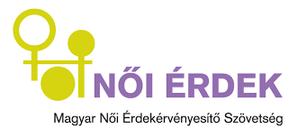
Despite the fact that the situation in Hungary is not ideal for feminism to flourish, the feminist and radical traditionalist women ' s organizations and initiations stay resilient in Hungary and they are not satisfied with the government-friendly framing of the traditional, dialogical, and gendersensitive approaches to women ' s issues and they are increasingly aware tha he women ' s issue is the question of power relations.

These organisations support each other, networking and deliver common activities to keep alive the values of feminism and deliver meaningful services and activities in order to improve gender equality.
https://dailynewshungary com/feminism-in-the-history-of-hungary/
https://hungarytoday hu/hungary-istanbul-convention-parliament-declaration/
https://docslib.org/doc/12544423/hungary-domestic-violence-including-in-romacommunities
https://edition cnn com/2018/10/19/europe/hungary-bans-gender-study-at-collegestrnd/index html
https://fpif.org/flowering-feminism-hungary/
https://time com/collection/100-most-influential-people-2021/6095809/dorottya-redai/
https://eige europa eu/men-and-gender-equality/methods-and-tools/hungary/activitymona-magyarorszagi-noi-alapitvany-mona-foundation-women-hungary
https://nane.hu/egyesuletunk/
https://institute-genderequality.org/frames-on-gender/countries/hungary/the-hungarianwomens-lobby/
1 2 3. 4 5. 6 7 8. 9. INFO
REFERENCES
BOX
ASFAR
FEMINISM IN UK
Feminism in the UK has a rich and long history, beginning as early as the late 19th century. For generations, women have fought for their rights, from the suffragettes of the early twentieth century to the modern-day fight for equal pay and representation. The history of feminism in the UK is a long and complicated one, filled with victories and setbacks. This article looks back at how feminism has evolved over the years, exploring the major milestones that have shaped the progress of women ’ s rights in the UK.
The modern fight for women ’ s rights in the UK is believed to have started in 18th century and was mainly focused on gaining women equal rights as men. It started when Mary Wollstonecraft, a Scottish
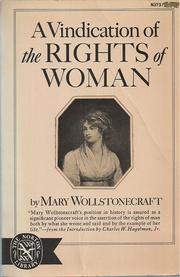
writer and early feminist wrote ‘A Vindication of the Rights of Women’. She argued that that women were just as capable as men and deserved equal rights, and equal education. It was controversial at the time but inspired many feminists.
In 1897, Millicent Fawcett founded the National Union of Women’s Suffrage (NUWS). Millicent wasn’t a believer in violence, and the women who subscribed to the non-violent movement became
MAR 2023 | VOL 5
[1]
known as Suffragists (the right to vote).

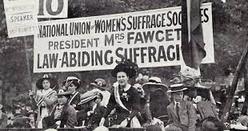
follow in the violent footsteps of men.
In 1914, the NUWS split into two groups: those who supported direct action tactics (such as breaking windows) and those who did not. The group that supported direct action was known as Women's Social and Political Union
Suffragettes (WSPUS), led by Emmeline Pankhurst and her two daughters. Over time, the two groups distanced from one another (both notably were vital to the UK women ’ s movement and exercised considerable amounts of influence abroad). The WSPU was responsible for many acts that were considered radical at the time, such as protesting in public spaces and destroying property. The group also went on hunger strikes when they were arrested by police officers They conducted attacks on MPs’ houses, railways stations and post offices armed with guns, bombs, and a belief that hat the only way to win the vote for women was to
The Suffragettes achieved some success when some of them were elected as Members of Parliament (MPs) in 1918, as well as when women over 30 were allowed to vote in 1928 which laid the groundwork for feminism in the UK.
From the 1960’s onwards the period of feminism is often referred to as the Second Wave, which is specific due to the wave of the political and social rights women acquired.
This period of feminism came to be known as Women's Liberation. During this period, the UK society underwent social upheaval and saw the rise of civil rights activism This led to a more radical form of feminism, with women ’ s rights activists becoming increasingly hostile to the government.
[2] [3]
In the UK, the Women’s Liberation Movement was formed, and shifted the focus of the movement from voting rights to a broader fight for gender equality in all aspects of society.
In 1964, women gained the right to become legal owners over the money they owned/earned and to inherit property. Women continued to use first generation tactics in the form of protests. 1968, in Dagenham, women at the Ford factory went on strike over equal work, as their work was classified as ‘unskilled’ which allowed them to be paid less than their male colleagues.
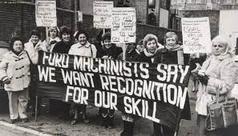
beautiful, we ’ re not ugly, we ’ re angry ’ . This specific event has also served as an inspiration for the 2020 movie "Misbehaviour," directed by Philippa Lowthorpe, staring Keira Knightly and Jessie Buckley.
With time, glass ceilings kept on falling down, in 1973 women were allowed access to join the stock exchange. The exchange didn’t exactly forbid women to work, but every time a woman applied to work for the exchange outside of an assistant or secretary role they were voted down.
This act went on to trigger the Equal Pay Act 1970. Also, in the 1970s feminist threw flour bombs at the 1970 Miss World Contests in a protest against objectification. The women from the Women’s Liberation Movement (WLM) chanted ‘We’re not
During this period feminism was a deeply divisive issue in the UK; while some saw it as a social justice movement, others viewed it as a threat to the traditional family unit. Women expanded intro careers they had never been admitted into before, and the ability to control reproduction also allowed women to take back control of their lives and not be dictated by nature as to when, and where to become a mother.
[4]
Over the decades, feminism has also had a significant impact on the media, leading to the creation of more positive and equal representations of women. Feminism has also had an impact on politics, particularly in the 1980s, when the creation of the Spouse-Rights Association led to the introduction of marital rape as a criminal offense. This marked a significant change in the way the UK viewed sexual assault. The 1980’s also brought around greater law attainments for women, these include the Sex Discrimination Act, the Employment Act, and the Domestic Violence and Matrimonial Proceedings Act.
The 1990s and 2000s saw the rise of third-wave feminism in the UK. During this period, there was growing criticism about the predominance of white, western heterosexual women and their concerns and this affected the writing of women ' s history. This movement was characterized by a reevaluation of the ideals of second-wave feminism, with a focus on acknowledging the differences between men and women. Third-wave feminism challenged the idea that women should be defined by their gender; rather, it focused on celebrating diversity and individuality. This period also saw the emergence of intersectional feminism, a movement that acknowledged the interconnectivity of different aspects of society, such as race and class.
The history of feminism in the UK has been long and complicated, but also incredibly important. Feminism has not only affected the lives of women, but men as well.

[5]
It has had an impact on almost every aspect of society, from the way woman are portrayed in the media to the way we are treated by the government.
The modern feminist movement is growing and evolving to meet the needs of today’s women While many of the issues that plagued feminism in the past are no longer an issue, there are still some areas in which women are struggling for equality. In particular, the wage gap between men and women has yet to be closed, with
women earning lkess than their male counterparts in most industries.
Additionally, the representation of women in positions of power in the UK is still lacking, with only 30% of parliamentarians being women. Or topics like domestic violence and sexual harassment/assault, period poverty and marginalisation in the workplace. So one thing we can all agree on, great things have been achieved so far, but there is still a lot to do to achieve gender equality.

Women’s Aid is offering life-saving services to women and children suffering from domestic abuse, offering a support system as well as a 24-hour National Domestic Violence Helpline.
The Fawcett Society – named after Millicent Fawcett, a suffragist is campaigning for gender equality and women ’ s rights at work. Rights of Women is providing free legal advice to women on all types of law Imkaan fights violence against black and minority ethnic women and girls
Young Women’s Trust is a feminist organisation working to achieve economic justice for young women
BIBLIOGRAPHY:
https://www studysmarter us/explanations/history/modern-britain/feminism-in-britain/ https://thesociologicalmail com/2018/10/01/the-history-of-feminism-in-the-uk/
https://wisg org/en/library/book/120/A-Vindication-of-the-Rights-of-Woman
https://hist259 web unc edu/nationalunionofwomenssuffragesocieties/
https://en.wikipedia.org/wiki/Suffragette
https://joncruddas.org.uk/50th-anniversary-dagenham-ford-machinist-strike
https://www legislation gov uk/ukpga/1976/50/pdfs/ukpga 19760050 en pdf
BOX
INFO
REFERENCES 1 2 3. 4. 5
ASSOCIAZIONE SUD
FEMINISM IN ITALY
To better understand early Italian feminism, we must first analyze its context. Italy reached its Unification late, compared to other nations, in 1861, and it was with the Risorgimento that women began to claim their rights as patriots. In fact, after supporting unification, they asked the newly formed Italian state to be considered full citizens or, at least, to include in the new legislation the rights that some pre-unification states had already granted.
Despite the petitions and delegations of influential women, the new Civil Code profoundly disappointed expectations: women remained deprived of political and administrative voting rights and always remained subject to marital authority, preventing them from autonomous property management.
Italian feminists obtained, therefore, little satisfaction at the legislative level: among them, in 1919, the suppression of the institution of marital authorization and, in 1925, the administrative vote (granted by the fascist regime and, in fact, never put into practice).
Thus, after World War I, which divided the movement between interventionists and pacifists, and the advent of Fascism, it was necessary to wait until after World War II for women to obtain the political vote: the active vote, approved in 1945, and the passive ballot, by a later decree, in 1946.

MAR 2023 | VOL 5
Early Italian feminism clashed with an unprepared society with a strong Catholic tradition and a recently consolidated political-institutional setup. Yet it manages to achieve significant achievements with time and effort. This is also why it is essential to cultivate a historical memory of these early feminists.
Some were ardent Mazzinian patriots like Adelaide Cairoli or the Paduan Gulaberta Beccari, a journalist and editor of several feminist periodicals with decidedly avant-garde positions. Often, then, they came from liberal families in which they had been able to breathe in an enlightened cultural climate: think, for example, of Anna Maria Mozzoni, who is considered by many to be the progenitor of Italian feminism because of her continuous and passionate commitment to the cause.
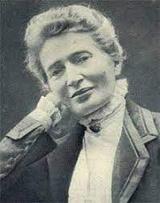
Others were wives or daughters of progressive leaders: this is the case of the socialist Anna Kuliscioff, an ItalianRussian doctor who, in 1911, founded the Socialist Committee for Women's Suffrage.
However, there were also plenty of working women: Carlotta Clerici, an elementary school teacher, and Giuditta Brambilla, a seamstress and union organizer of Milanese women workers. Among their commitments to fuel the cause were often philanthropic works that allowed them to show themselves active and able to contribute to the public sphere: helping orphans, caring for the sick and war veterans, and campaigns against alcohol and prostitution. To support the movement, just like their British colleagues, they sold gadgets or organized prize competitions for feminist writings.
But it was in the 1970s that the period of women ' s achievements was the richest (even though in 1968, women ' s presence in Parliament was 2.6 percent and in 1976 6.7 percent). Between '68 and '69, the Constitutional Court
abolished the distinction between the sexes by dropping the crime of adultery for women and concubinage for men; in 1970, the divorce law was passed, confirmed by the outcome of the 1974 repeal referendum.
In '71, the introduction of state kindergartens and, in '75, counseling centers. The primary family law reform of 1975 marks the transition to a family based on mutual consent and cooperation. In '77, it is the turn of the legislation on equal treatment of men and women in labor matters, which recognizes the possibility for women to perform, for equal pay, any work.
The legislative framework only partially restores the profound transformations that swept through civil society in those years and changed the role of women and gender relations.
Since the 1960s, there had been an economic boom that brought prosperity and new consumption styles; but access to education with compulsory primary schooling had also necessarily raised the population’s cultural level.
Finally, '68 had been a milestone in universities, factories, and the country, of modernization and, once again, of change in family and social roles.
But it was in the university environment and then within the "extraparliamentary" groups that the first collectives were born: Feminist Struggle in Trento, which in 1972 would publish The Consciousness of Exploited, a text with a Marxist slant that sees women doubly exploited, by "capital" and by men.
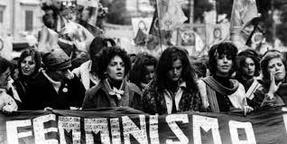
Several others publishing initiatives were born in the 1970s and 1980s: The Women's Edition and Laura Lepetit's La Tartaruga in Milan. Magazines such as DWF, Legendaria and Memoria.
Women's centers and universities such as La Maddalena in Rome. We have to mention some of the most significant feminists and experiences in ‘70s-‘80s with influencies
till nowadays on the feminist movement.
Carla Lonzi was an important art critic, born in 1931. Its name is linked to Rivolta Femminile, one of the first modern feminist groups in Italy, and to the publication of some essays that have become reference readings for feminism: “Sputiamo su Hegel” and “La donna clitoridea e la donna vaginale”.

Feminism has also been and above all a collective battle and there have been numerous feminist movements and associations in Italy in action over the years. Many realities are still in business, for example:
Franca Rame. Among the best Italian actresses, born in 1929 and wife of Dario Fo (Nobel Prize for Literature in 1997), approached the feminist movement in the late 1970s. Among her works we can mention The Rape (1981), inspired by the group sexual violence she herself suffered in 1973. The monologue was courageously brought to the theater and television.

Feminine Revolt. The group was born in the Seventies from the meeting in Rome of Carla Lonzi, Carla Accardi and Elvira Banotti. It was probably the first group to choose the path of separatism, deciding to communicate only between women. Important is the adoption of the practice of self-awareness and the construction of one ' s autonomy
Diotima. More than an association, a female philosophical community
born in 1983 by Luisa Muraro, a philosopher at the University of Verona. Inspired by the philosophical reflection of Luce Irigaray, this reality is still active today and organizes interesting themed seminars. Luce Irigaray is a philosopher, linguist and psychoanalyst who has revised these disciplines in the light of feminism, the unconscious and the body of women, the bonds of every woman with her mother, working hard on the theme of difference, democracy and gender rights.
International Women’s House. Officially born in the early 90s in Rome, it is a unique project – it also houses a restaurant, a convention center and a guesthouse – and aims to enhance the political and social commitment of women, also offering services and advice.
AWMR Italy. The association works to overcome all economic, cultural, sexual and racial discrimination in the Mediterranean area. Among the main objectives, the abolition of all forms of exploitation and violence
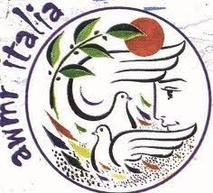
women.
Research by CIRSDE (Interdisciplinary Center for Research and Women's Studies) of the University of Turin shows 20 University Equal Opportunity Committees for the protection of female workers, teachers, students, and students; 15 Gender Studies at Universities as well as numerous curricular and advanced courses. In Padua, the University Forum for Gender Policies and Studies has been developed, which "aims to be a synergistic point of collaboration between university and city."
Codice Donna is an association of women lawyers offering legal advice on special terms to protect women in need.
D.i.Re - Women In Network Against Violence is Italy's first and only network of non-institutional antiviolence centers. It is composed by are a group of 84 organizations on the Italian territory, managing over 100 Anti-Violence Centers and more than 60 Shelter Houses, listening to about 21 thousand women annually. It aims to build a national political action that knows how to promote the cultural change fundamental for combating and overcoming male violence against women.
Non una di meno is the Italian feminist movement inspired by the historic Mexican and Argentine Ni Una Menos. Its battle cry is the fight against violence against women and gender discrimination in all its forms, at home, at work, in politics, and every other context.

INFO BOX
BIBLIOGRAPHY
http://www.enciclopediadelledonne.it/biografie/carla-lonzi/
https://lagallerianazionale.com/blog/self-portrait
http://www enciclopediadelledonne it/biografie/franca-rame/
https://www diotimafilosofe it/
https://www.casainternazionaledelledonne.org
https://awmr-donneregionemediterranea-italia.blogspot.com
https://www cirsde unito it/it
https://www unipd it/en/equal-opportunities-gender-equality
http://www.codicedonna.it/chi-siamo/
https://www.direcontrolaviolenza.it/chi-siamo/
https://nonunadimeno wordpress com/2016/11/09/chi-siamo/
https://cle ens-lyon fr/italien/civilisation/xxe-xxie/le-mouvement-des-femmes/nascita-ecaratteristiche-del-femminismo-storico-in-italia-l-eredita-del-movimento-delle-donnealle-nuove-generazioni
https://thevision com/cultura/femminismo-donne-voto/
INNOWA
FEMINISM IN SPAIN
In Spain, several women have been changing the concepts of women ' s traditional roles at home, taking care of children and the elderly and doing housework
Spain has had Catholic roots since its beginnings and we cannot forget that in the Catholic religion, although in the Middle Ages and before that, in Roman times, women enjoyed rights that, with the arrival of the Renaissance, they no longer enjoyed, it was not until the 15th century that women officially had a soul, the basis for not having equal rights.
It is for this reason of injustices and unbalanced situations that, in a not so ancient era, it was necessary to use a man (father or husband, normally) to
dispose of the estate (in the case of widows, if a brother or son did not take charge, an executor would do so, but she herself could not dispose of her own estate).
At the beginning of the 20th century, great feminist women emerged: María Lejárraga (better known as María Martínez Sierra), Margarita Nelken, Clara Campoamor, or Emilia Pardo Bazán, are some of the most relevant figures.
As for the education received by a woman, the Public Instruction Law of 1857, although it made it compulsory for girls to
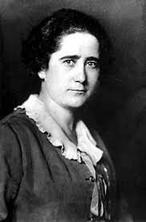
MAR 2023 | VOL 5
attend primary school, did not fail to exclude them from subjects such as Industry, Commerce, Geometry and, of course, Sex Education
October 20, 1918 marks a milestone in the history of feminism in Spain: on that day the National Association of Spanish Women (ANME) was born, the first feminist organization at the state level. The articulation of the movement in our country, which has become a global reference, took longer than in other European countries
Recognition of women ' s parental rights over their children
Elimination of the crime of adultery for women.
And "all labor legislation that has to do with equal salaries for men and women " .
Carmen de Burgos y Seguí (Almería, December 10, 1867-Madrid, October 9, 1932) was a Spanish journalist, writer, translator and women ' s rights activist of the Silver Age. She used male pseudonyms such as "Perico el de los Palotes", among others. She is considered a member of the generation of '98 and the first professional journalist in Spain and in Spanish as editor of the "Diario Universal" of Madrid.
Also, as the first war correspondent
The Republic intensifies the presence of women in the universities, but the Second Republic is basic, since the change in the regulatory framework notably favors the rights of Spanish women:
Recognition of women ' s suffrage
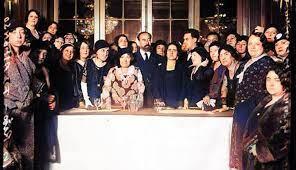
Recognition of civil marriage and divorce
We cannot forget Clara Campoamor, she was a lawyer, writer, politician and defender of Spanish women ' s rights. During the Second Spanish Republic she created the Women's Republican Union and was one of the main promoters of women ' s suffrage in Spain, which was included in the Republican
Constitution of 1931 and was exercised for the first time in the 1933 elections. Because of the Civil War she had to flee Spain and died in exile in Switzerland.
During the Franco Dictatorship, there was a regression of many of the rights achieved, a woman could not travel alone (except with paternal or husband's consent), nor open a bank account.
In the 70's a feminist movement began to take shape, since women, although submissive to the patriarchy, had been able to study, be educated and take courage. Franco died in 1975 and two weeks later the "First Women's Liberation Day" was celebrated in Madrid (still in hiding).
Up to that moment, there was talk of the Feminism of Equality, but it encountered the Feminism of Difference. Currents that in the 90's were one, moment in which they began to work on an agenda for the vindication of women ' s rights in different spheres.
In 1986 the term "Glass Ceiling" was coined in The Wall Street Journal, to talk about the "invisible

barriers" that highly qualified professional women encountered (and still do) and that prevent them from reaching higher levels. And it is in these areas that Feminism begins to work on an agenda: the parity agenda.
But there are two more areas, in addition to the Glass Ceiling, that Victoria Camps mentions in her book "Women's Century": inequality in domestic life and gender violence. Gender studies reach the universities, critical theories of feminism are developed and feminist militancy not only reaches the streets to defend women ' s rights but goes beyond and Feminism becomes Global: it speaks of Universal Human Rights.
In 2007 the Equality Law was enacted in Spain, but it does not provide a solution to the issue of real equality. In addition to different feminist movements, it should not be forgotten
that there are also women who work for equality and who claim a different work than the one promoted by most of the current feminist movements One of these references is Alicia Rubio, a writer, professor and politician from Madrid who has written books such as "Cuando nos prohibieron ser mujeres... y os persiguieron por ser hombres. To understand
how gender ideology affects us " , as well as "Feminism without complexes", where, as the lawyer Yobana Carril points out, "In Spain feminism is fighting a battle that has already been won, it does not seek an equality that already exists, it seeks historical revenge.
Today's feminism wants women who are fragile and dependent on the State".
INFO BOX
The most important feminist associations in Spain:
AMMAR (Association of Migrant Women for Race)
The Association of Women Jurists Themis Association of Women Journalists and Writers (AMPE)
The Association of Women in Science and Engineering (AMCI)
The Association of Progressive Women
BIBLIOGRAPHY
http://www mujeresenigualdad com/La-mujer-no-tenia-alma-en-la-Edad-Mediaes 1 2569.html
http://www.mujeresenigualdad.com/
https://www vocesvisibles com/historia-del-feminismo-en-espana/

https://www epe es/es/igualdad/20220304/8-m-inicios-movimiento-feminista-13325341
https://www elconfidencial com/espana/2019-03-08/8m-espana-feminismo-machismo-parobrecha-salarial 1864982/
https://www celtiusabogados com/
https://european-union europa eu/institutions-law-budget/institutions-and-bodies/institutionsand-bodies-profiles/eige es
FEMINISM IN DENMARK

A single event has the momentum to create a ripple. A ripple of inevitable changes. These events have the caliber to single-handedly change the course of history. One such event that changed the course of women ´ s lives in Denmark was the Red Stocking Movement. The Red Stocking Movement had an active stronghold in the Danish society for about ten years. But its impact extended beyond its timeline and contributed to create a stronger and lasting influence on women ’ s rights in Denmark. The 1970 Movement
The Red Stocking Movement began in 1970 and it was kick-started by a group of feminist students from the Redstocking Movement founded in 1969 in New York City. The Movement was found on the view that there should be a change in stereotyped gender roles and that the role of a woman should no longer be defined or limited by patriarchal ideologies. The Movement wanted to create a new society based on the ideal of socialism where is no discrimination or oppression
MAR 2023 | VOL 5 INTERCOLLEGE
helped society and the government to look more closely into the realities of women ’ s rights and living conditions in Denmark
"NO WOMEN'S STRUGGLE WITHOUT CLASS STRUGGLE AND NO CLASS STRUGGLE WITHOUT WOMEN'S STRUGGLE" (WALTER.L, 1990)
The Red Stocking movement began with twelve women carrying signs with slogans along the streets of Copenhagen. These women predominantly from Copenhagen University, were dressed as caricatures of stereotypes in the beauty industry The movement began with huge popularity with a significant amount of media coverage. During the birthing phase of the movement, it was predominantly an urban phenomenon. Nearly all activities regarding the movement were centered around the bigger cities of Denmark such as Copenhagen, Aarhus and Odense. With the Movement gaining more momentum with each passing year, it spread around to medium-sized cities becoming an even stronger phenomenon However, the events organised in the larger cities entailed more radical demonstrations which contributed to bigger change.

On an organisational front, the movement had a flat structure and had no formal leadership It also did not comprise an expansive set of principles. Thus, each group were responsible for their own self and were able to function with their own purpose and rules As part of the movement, the women excelled on every front and demonstrated their competency to make massive changes on their own. They contributed to art and culture by featuring some all-female bands, introducing women ’ s houses, encouraging women ’ s art and women centric literature. These counter-cultural actions were antidotes to what the movement saw as a severely male centric culture.
The Movement consequently helped secure political measures and laws that led to more equality between the sexes. Laws solely focusing on the health and well-being of the deuxieme sexe were also introduced owing to the phenomenon.
Some examples of laws and reforms passed were the right to free abortion law in 1973, the Equal Pay Act in 1976 and gender positive changes in the Maternity Act in 1980.
The members of the Redstocking Movement took the initiative to encourage universities to undertaker more research initiatives based on women and now they exist as gender research in Danish Universities.
This step also introduced a gender perspective in already existing academic disciplines. The Red Stocking Movement also left behind institutions such as KVINFO, the Women’s
Museum in Aarhus, Crisis centres for abused women and the Women’s House in Copenhagen, which are fully or partially funded by the Danish government. The Redstocking Movement paved the way for a new era of social development for women in Denmark It was a momentum, whose ripples have refused to die down till date. Even though the movement is not the same as it began, it acted as a catalyst for positive change and metamorphosized into something far more reaching and stable. It has become a movement that has seeped its way through social, political and cultural systems leading to an equal playing field for all genders.
INFO BOX
BIBLIOGRAPHY
Det kgl. bibliotek. (2023). Rødstrømper – Sisterhood and revolution. kb.dk. Retrieved February 6, 2023, from https://www kb dk/en/inspiration/rodstromper Kiddle. Red Stocking Movement (Denmark) facts for kids. Red Stocking Movement (Denmark) Facts for Kids Retrieved February 3, 2023, from https://kids.kiddle.co/Red Stocking Movement (Denmark)
Løgstrup, H , & Sørensen, A E (2023) Rødstrømperne og den Nye Kvindebevægelse, ca 1970-1985 Aarhus Universitet. Retrieved February 6, 2023, from https://danmarkshistorien dk/vis/materiale/roedstroemperne-og-den-nye-kvindebevaegelse-ca1970-
1985#: :text=R%C3%B8dstr%C3%B8mperne%20var%20en%20venstreorienteret%20og,at%20den%20 havde%20sin%20storhedstid
Isis International (2023) Denmark Feminist Archives Retrieved February 3, 2023, from http://feministarchives isiswomen org/publications/isis-international-bulletin/51-isisinternational-bulletin/isis-international-bulletin-5-october-1977/1252-denmark
Walter, L (1990) The Embodiment of Ugliness and the Logic of Love: The Danish Redstocking Movement. Feminist Review, 36, 103–126. https://doi.org/10.2307/1395117
Wikiwand Red Stocking Movement (Denmark) Wikiwand Retrieved February 3, 2023, from https://www.wikiwand.com/en/Red Stocking Movement (Denmark)
INTERNATIONAL INTERNSHIP FEMINISM IN ROMANIA
The feminist movement and collective in Romania is a constantly evolving entity that reflects the current state of gender equality in the country. Today, Romania has a strong network of feminists working to improve the lives of women and girls, but their work builds upon a rich history of activism and advocacy that stretches back many years. From early pioneers to contemporary activists, the story of the feminist movement in Romania is one of resilience, dedication, and progress.
The feminist movement in Romania today is a dynamic and active force working towards equality for women. In recent years, there has been a resurgence of the movement, with numerous organizations, collectives, and individual activists working towards
their goal. The movement is characterized by its intersectional approach, as it seeks to address not just gender-based discrimination, but also issues such as LGBTQ rights, reproductive rights, and the fight against violence against women
One of the key players in the Romanian feminist movement today is the Romanian Association for Feminist Analysis, which was founded in 1997 The organization works to promote gender equality through research, education, and advocacy. Another important organization is the Association for the Development of Women in Romania, which was established in 1991.
The organization provides support and assistance to women who have been victims of violence and abuse.
MAR 2023 | VOL 5
In recent years, the feminist movement in Romania has been the driving force behind numerous initiatives and campaigns aimed at raising awareness of issues affecting women and promoting gender equality. For example, the movement has been instrumental in pushing for greater access to birth control and reproductive health services, as well as advocating for laws that protect women from violence and abuse.
The feminist movement in Romania is also very active on social media, using platforms such as Facebook and Twitter to reach a wider audience and mobilize support for their causes. Many individual activists and influencers also play an important role in the movement, using their platforms to raise awareness of issues affecting women and to promote gender equality.
The history of the feminist movement in Romania is a long and rich one, stretching back many

decades. The feminist movement in Romania dates back to the late 19th and early 20th centuries, when women ' s rights activists began advocating for greater equality and opportunities for women. During this time, various associations, such as the Romanian Society for Women's Education, were formed to promote women ' s rights and encourage their involvement in public life.
One of the most prominent figures in the history of feminism in Romania was Ana Pauker, a pioneering communist activist who was instrumental in establishing the country's first feminist organizations in the 1920s and 1930s such as the Association of Romanian Women and the League of Romanian Women. These organizations worked to promote women ' s rights and to raise awareness about gender equality issues.

Other important figures were Maria Cârneci, a writer and pedagogue who was a fierce advocate for women ' s rights throughout her life and Maria V. Comănescu, who was a writer, activist, and educator. She was a strong advocate for women ' s education and political rights and was one of the first women to run for political office in Romania. In the decades following World War II, the feminist movement in Romania continued to grow and evolve, with activists working to improve the lives of women and girls in a range of ways. For example, the Communist government of Romania took a number of steps to promote gender equality, including enacting laws to ensure equal pay for equal work and expanding access to birth control, however the government heavily censored and controlled all forms of political activism, including feminist activism. Luckily, a small number of women ' s rights activists continued to work underground to promote their cause.
After the fall of communism in 1989, feminist activism in Romania experienced a
resurgence, with new organizations and groups forming to advocate for women ' s rights and gender equality. Today, a wide variety of groups and individuals continue to work towards these goals, including feminist activists, NGOs, and academics.
Today, the feminist movement in Romania continues to grow and evolve, driven by a new generation of activists and advocates. Youth workers, along with a diverse group of allies, are leading the way in advocating for gender equality and challenging patriarchal norms. Through their activism and activism, they are shaping the future of Romania and helping to write the "future's past" for the feminist movement.
There are a number of organizations and groups that are working to advance the cause of feminism in Romania, including feminist collectives, women ' s rights associations, and individual activists
These organizations are taking a multifaceted approach to advocating for women ' s rights, working to raise awareness about gender-based violence, promote equality in the
workplace, and challenge gender stereotypes.
In addition to these organizations, there are also a number of individuals who are playing a key role in shaping the future of feminism in Romania. These individuals include writers, pedagogues, sociologists, and others who are using their voices and platforms to raise awareness about the importance of gender equality. Whether through their work, their activism, or their social media presence, these individuals
are helping to inspire change and to create a more equitable future for women in Romania
In conclusion, the feminist movement in Romania is thriving and continues to evolve, driven by a new generation of activists and allies With a diverse group of individuals and organizations working to advance the cause of feminism, there is much cause for hope and optimism as we look towards the future of the feminist movement in Romania.
INFO BOX
Romanian Association for Feminist Analysis (RAFA): http://www.analdeme.ro/ Association for the Development of Women in Romania: https://www.asociatiadezvoltare.ro/ Feminist Romania: https://www.facebook.com/FeminismRomania/ Romanian Feminist Blog: https://feminism.ro/ Gender Equality Romania: https://gender.org.ro/ Women's Rights in Romania: https://www.facebook.com/DrepturileFemeilor/ Ladybud Romania: https://www.ladybud.ro/
Ana Pauker: A Romanian communist activist and one of the pioneers of the feminist movement in Romania.
Maria Cârneci: A Romanian writer and pedagogue who was a fierce advocate for women ' s rights throughout her life
Maria V Comănescu - A writer, activist, and educator who was a strong advocate for women ' s education and political rights
Communist Party of Romania: The political party that governed Romania from the end of World War II until 1989
Association of Romanian Women (1921-1938) - A women ' s rights organization established in the 1920s
League of Romanian Women (1921-1938) - A women ' s rights organization established in the 1920s Association for Women's Rights in Development (AWID) - A global feminist organization based in Romania.
"Feminism in Romania" by Maria Bucur - A book that explores the history of feminist activism in Romania.
"Women's Rights in Romania" by Oana Bădescu - A book that examines the status of women ' s rights in Romania today.
ORGANIZATIONS
Romani CRISS ATUDOR
Gender Equality Observatory
Romanian Association for the Club of Rome Association of Roma Women "Şansa"
INDIVIDUAL ACTIVISTS
Dr Ioana Mihaela Crăciun
Maria Gheorghiu
Gabriela Alexandrescu
Roxana Lupu
BOOKS
"Gender and Development in Romania" by Ioana Mihaela Crăciun "Feminism and Post-Communism: Dialogues and Challenges" edited by Maria Gheorghiu and Gabriela Alexandrescu
WEBSITES
Romani CRISS (www.romanicriss.org) ATUDOR (www.atudor.ro)
SOCIAL MEDIA
Gabriela Alexandrescu (Facebook, Twitter, Instagram)
Roxana Lupu (Facebook, Twitter, Instagram)
































